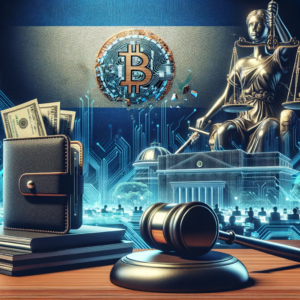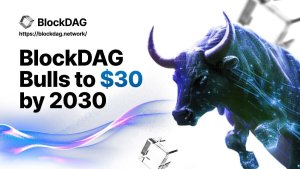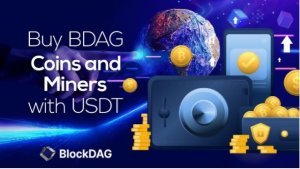Everything you need to know about Ethereum’s upcoming EIP-1559 update
In terms of price, the cryptocurrency markets have been rocked by a correction and most continue to trade within a range.

In terms of price, the cryptocurrency markets have been rocked by a correction and most continue to trade within a range. It is unclear where the crypto markets will head next, but in terms of fundamentals, the upcoming EIP-1559 update could be a significant one for the second-largest cryptocurrency, Ethereum.
Here’s everything you need to know about the update.
What is EIP-1559
EIP-1559 stands for “Ethereum Improvement Proposal” and it is an update that is set to go live in July 2021. It will change the fee structure of Ethereum and this change will see gas fees split into two. Both of these fees will be transparent for users. It will include a tip from the sender and a base fee which is then burned.
What are gas fees?
Gas fees are the cost of transactions on the Ethereum ecosystem. They are not fixed, and the system works through a ‘first price auction’. Users submit bids that are then picked up by miners. At peak times, the network can be congested and gas fees can be particularly high. This can lead to transactions stuck on ‘pending’ for hours which is very inconvenient.
There is also the possibility of transactions failing if a bid is not picked up. Overall, the system appears to be lacking efficiency, and users have been complaining about the rising gas prices.
Will EIP-1559 fix gas fees?
EIP-1559 is not predicted to fix the issue of fees right away, but it will be a starting point to a fairer and more efficient system. The base fee will be adjusted to market rates on a block by block basis which means users won’t need to select a specific gas option as is the case currently. If a user wants a transaction completed more quickly, there will be an option to ‘tip’ the miner.
The effect on supply
The burning mechanism for the base fee will have a major impact on supply due to the fee being paid in ETH. In theory, this could lead to the asset becoming deflationary. This is notable because it means that Ethereum will eventually shift from a proof of work model to a proof of stake model. The full shift will not occur however until Ethereum 2.0 is rolled out.
Ethereum vs Bitcoin
With anticipation building over this update, some have wondered whether it will give Ethereum an advantage over Bitcoin as an asset. The so-called ‘flippening’, where Ethereum overtakes Bitcoin has been discussed for years but has never come close to happening. But, could it be a real possibility now?
The answer is difficult to tell and in the short term, it remains unlikely that Ethereum will come close to snatching the crown from the undisputed leader of the cryptocurrency markets. Bitcoin has a strong first-mover advantage and institutional investment. Companies have added Bitcoin to their balance sheets and it has been approved to be used as legal tender in El Salvador. Bitcoin also has a market cap of over $1 trillion. Their use cases are also different with Bitcoin being primarily used as a store of value. Bitcoin does not have staking ability or smart contracts.
If Ethereum can continue to dominate as the main platform for DeFi (Decentralized Finance), then there is the possibility it could grow even further. However, it does face some stiff competition in that area.
Ethereum vs Other Competitors
A better comparison may be seen by Ethereum’s direct competitors, some of which have been gaining plenty of traction in the last year. Most of them have significantly lower transaction fees than Ethereum. Let’s take a look at how this update could potentially change the current landscape.
The DeFi space has been growing rapidly and blockchain projects such as Polkadot, Solano, Cardano and the Binance Smart Chain have been seen as potential ‘Ethereum Killers’. However, Ethereum currently has a strong first mover’s advantage since it was the first blockchain project to successfully deploy smart contracts.
Polkadot has the potential for better scalability through multiple parallel blocks known as ‘parachains’. Binance smart chain can be thought of as a centralized clone of Ethereum with far fewer fees, and it has attracted plenty of attention. Solano is a project which boasts lower transaction fees and transaction latency.
With this update, Ethereum could potentially move ahead of its competitors by fixing a core issue that has remained a nuisance for so many users.
Closing Thoughts
Overall, EIP-1559 could have a major impact on the Ethereum ecosystem, but changes may be slow rather than occurring at the time of the change. The move to proof-of-stake is significant, however, we will wait to see what impact this shift will have on the cryptocurrency markets as a whole.
The article contains market commentary information, it should not be regarded as investment research or investment advice. Past performance is not a reliable indicator for the future.
CFDs are complex instruments and come with a high risk of losing money rapidly due to leverage. 76.25% of retail investor accounts lose money when trading CFD









